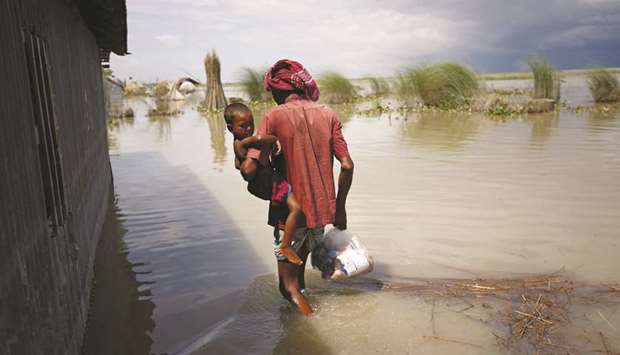Some 40 Nepali officials — including wildlife experts and army soldiers from Nepal’s Chitwan National Park — travelled across the border to India for the mission, said Nurendra Aryal, the park’s deputy warden.
He said his team rescued four one-horned rhinoceros, including two male adults aged 20 and two calves at Valmikinagar Tiger Reserve in the Indian state of Bihar.
“We have spotted another rhino which was swept by the flood into India. We will rescue the animal after verifying it,” Aryal told DPA.
One by one officials tranquillised the rhinos using a dart gun, loaded it into a pen and then drove by truck for 150km north toward Nepal.
“We were helped by more than 100 Indian wildlife officials. Dozens of people had gathered to see it,” he said.
The devastating floods that inundated huge swathes of the southern plains killed at least 130 people in Nepal. It also killed a rhino and a dozen deer in Chitwan National Park, the biggest in Nepal.
Three other rhinos were found about 10km away from the park on Nepal side of the border, he added. “We will rescue them soon,” Aryal said.
Nepal, home to 645 rhinos, has earned praise from conservationists for doubling its population, which had declined due to poaching during the country’s 10-year civil war.
More than 24mn people are believed to be affected by flooding in large areas of Nepal, Bangladesh and India, with more than 700 people thought dead as fears rise for hundreds of villages that might be stranded by flood waters, the International Federation of Red Cross and Red Crescent Societies (IFRC) said.
“This is the worst flooding that parts of South Asia have seen in decades. Entire communities have been cut off. The only way to get aid to some of these villages is by boat and many are running out of food,” said Jagan Chapagain, IFRC undersecretary general for programmes and operations.
“The situation is going from bad to worse. In Nepal, as waters finally recede, our teams are finding communities that have lost homes, identity documents everything. In Bangladesh and India, the number of people affected is rising by the hour as waters rush south,” Chapagain added.
Clean water and sanitation are major priorities in each of the affected countries with increasing incidents of some diseases already being reported.
“The floodwaters have become a breeding ground for deadly diseases such as diarrhoea and malaria.
We fear that other diseases such as dengue and Japanese encephalitis are also on the rise,” the IFRC official said.
Over 1,800 Red Cross and Red Crescent volunteers are working alongside local authorities in the three countries to prevent further deaths and help communities withstand and recover from the floods.



